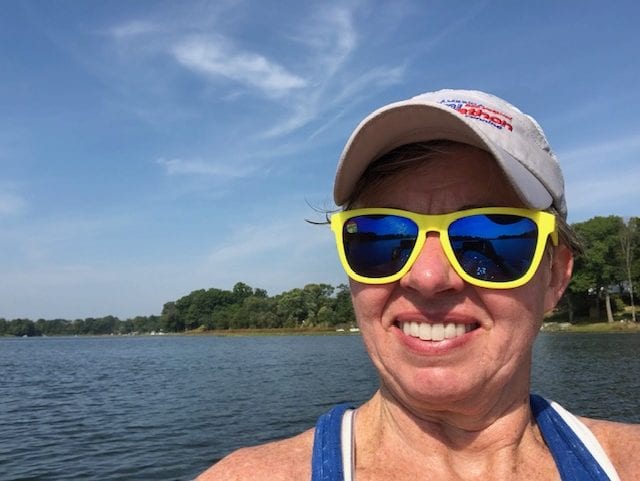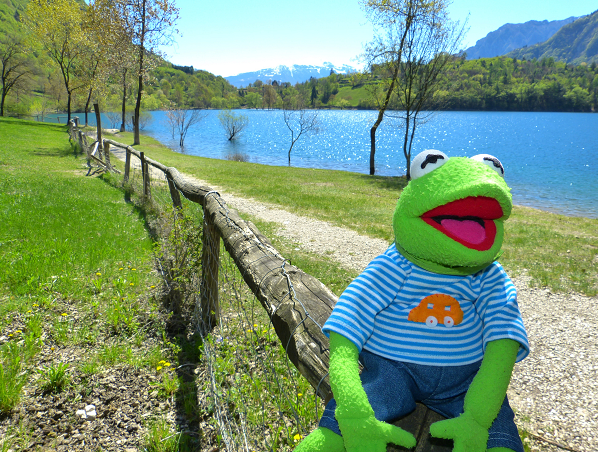If you are of a certain age, you will certainly recognize that song title!
Frogs and toads are easily misidentified and misunderstood. You can’t get warts from touching or kissing them, most are not poisonous, and they provide a number of important benefits. Frogs and toads are actually a sign of a thriving backyard ecosystem, which means we should create a shoreline and landscape that helps them survive.
Frogs and toads have highly permeable skin that allows liquids and gases to pass through easily. This makes them particularly sensitive to pollution, especially when developing from tadpoles to adults. Chemicals found in their environment like fertilizers, weed and pest killers, and detergents can be absorbed into their bodies and cause deformities. According to MSU Extension, due to pollution, loss of habitat and disease, amphibians are the most endangered group of wildlife on earth, with one-third to potentially half of amphibian species worldwide at risk of extinction.
Frogs and toads eat pests like crickets, flies, beetles, spiders, grubs and slugs and are an important food source for a variety of other animals.
Is It a Frog or a Toad?
Frogs prefer to be in water and spend most of their time on or near lakes and streams. They tend to be bigger than toads, and their legs are longer and meatier. They tend to also have slimy, smooth skin due to the mucous-like substance that covers their bodies. Frogs generally lay their eggs in clumps that are connected by a membrane in the water.
Toads prefer to be on dry land but also need interaction with water, just not to the same degree as frogs. They are commonly found in brush, grass, under leaves, in compost piles or mulch. They are nocturnal, spending most of the day sleeping and the night hunting, eating and mating. Most toads are smaller than frogs and their skin is dry and hard with bumps. Their eggs are joined together in strings or strands instead of clumps.
Help the Frogs and Toads!

- Minimize the Use of Chemicals.
- Time Chemical Use Appropriately. If you do choose to apply fertilizers or pesticides, spot treat during sunny, non-windy and dry days and when animals are the least active. Apply chemicals when rain is not expected for a few days. Use caution when applying herbicides as some persist in the soil for long periods of time. If applied late in the growing season, they can impact eggs and tadpoles the following spring.
- Control rainwater runoff. The more rainwater that can be filtered through vegetation and soil as opposed to entering a storm drain or washing into the lake, the healthier our water is. Consider installing a rain barrel at the end of a gutter or direct your gutters into a rain garden to capture runoff. Rain gardens add beauty and habitat to your yard while also helping the environment.
- Create habitat and avoid barriers. Frogs and toads do not like wide open sunny places like grassy lawns (just like geese!). During the day, they prefer to stay damp in shady areas away from heat and direct sunlight. Consider replacing parts of your lawn with native plants that can provide food and protection. On a smaller scale, create shelter for them by building a brush or rock pile, or leave a layer of leaves for them to hide in. Another popular idea is to turn over a clay or ceramic flowerpot and prop it up with rocks, making it easy for a frog or toad to slip inside for an afternoon nap. Shelters should be placed in quiet and shady areas, which are not mowed frequently.
- Handle with care. If you are lucky enough to have a frog or toad visitor in your garden, never handle them or other amphibians when you have insect repellent, sunscreen or soap on your hands. They can be harmed or killed by chemicals we consider harmless. Keep hands moist or wear clean garden gloves when handling if possible.

“And people tend to pass you over, ’cause you’re not standing out like flashy sparkles in the water or stars in the sky.” ~ Kermit the Frog
Shoreline habitats are very important to amphibians. Removing shoreline plants and installing seawalls and rock rip rap make it nearly impossible for frogs or toads to reach and use shorelines to rest and feed. If we want to continue to hear these sounds of summer (peepers – bullfrogs), we must make sure frogs and toads have easy access into and out of the water.
Source: Paige Filice and Erick Elgin, Michigan State University Extension – April 15, 2021

Hi, I’m Debbie Palmer. I received a BS in Horticulture from Purdue University. Here at LMEF, I am responsible for outreach presentations, monitoring the lake and it’s wetlands, project manager for restoration and research projects, and act as a community resource for all things related to the well-being of Lake Maxinkuckee and its surrounding watershed. I completed Indiana Watershed Leadership Academy, volunteer with the Indiana Clean Lakes Program, Hoosier River Watch and Marshall County Lakes and Waters and serve as a Board Member for Indiana Lakes Management Society.


Recent Comments